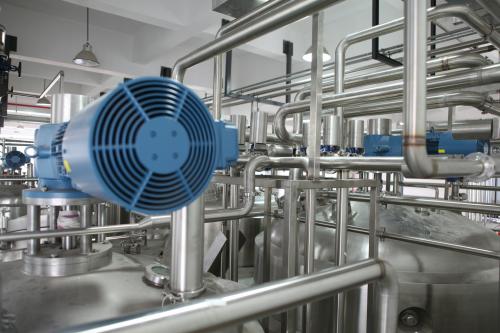Determining the Viability of Selling Your Used Process Equipment

As your company grows and adapts, the equipment that once tirelessly served you may no longer be the perfect fit for your current needs. Perhaps you've implemented cutting-edge technology, or maybe your old equipment just isn’t working as well as it used to. Use these tips to check if it’s the right time to sell your used process equipment.
Evaluate the Equipment’s Age and Condition
The age and condition of your used process equipment are the cornerstones of its resale viability, and they should be the first things you look at if you want to sell used machines. Newer equipment generally commands a higher price. Technology advancements happen rapidly, and buyers naturally gravitate towards machinery with the latest features and capabilities.
However, don't discount the value of older equipment if it's still in high demand or caters to a specific niche application.
Functionality
The equipment should be fully operational and capable of performing its intended task efficiently. Any performance issues, limitations, or known defects will significantly impact its value. Gather service records documenting past repairs and preventative maintenance to showcase the equipment's reliability.
If there are any known defects or issues, mention them clearly on the product listing. Some buyers will overlook defects if the price is right.
Appearance
A process machine’s exterior isn’t a huge factor when determining its viability, but it can play a role in some cases. For instance, if the equipment has major dents, scrapes, or deformities, it could drive potential buyers away. You don’t need to go out of your way to buff up minor scratches.
Use this checklist to make your evaluation easier:
Maintenance: Does the equipment need maintenance? When was the last time parts had to be replaced or repaired?
Safety: Do the safety mechanisms work properly? Can the equipment reliably be used for everyday industrial operations?
Operation: Does the equipment produce excessive noise during operation? Is the control panel working as it should?
Conduct Market Research
It’ll be hard to sell your equipment if there’s no market for it. For instance, services like condensate recycling programs have completely revolutionized the additive manufacturing pipeline, making older methods obsolete. Here’s how you can research the current market landscape before making a sale:
Marketplaces: Explore online platforms dedicated to the sale of used industrial equipment. Search for listings of similar machines and analyze their pricing, features, and overall condition. Doing this will help you gauge the current market value of your equipment and identify potential competitors.
Publications: Look for industry publications and research reports covering emerging trends and the industry's current state. Reading up on these reports will help you identify the viability of your equipment.
Identify Buyers: Even if the industry is trending towards newer equipment and technology, many businesses may still be interested in buying your equipment. Use those reports to identify potential buyer groups. Once you have a shortlist, you can tailor your marketing efforts to those groups for better results.
Factor in Everything
Selling used process equipment involves much more than just the machine. A successful sale often involves additional costs beyond the sale price, including transportation, disassembly, and loading.
Depending on the size and complexity of your equipment, professional disassembly might be necessary before transportation. Factor in the cost of hiring qualified technicians to safely dismantle the machinery and prepare it for shipment. Similarly, the cost of transporting your equipment to the buyer can vary significantly depending on size, weight, and distance.
And relative to your location, you can likely choose from multiple shipping options. Seek quotes from different suppliers before finalizing any deals. You might be able to arrange with the buyer to cover a few or all of the disassembling and transportation costs. The key here is to be transparent and communicate your expectations early on in the process.
Determine Obsolescence
The accelerating pace of innovation has also left its mark on process equipment. New technology can significantly impact the resale value of older equipment. For instance, fluidized bed reactors were developed as major improvements to older rotary kilns, causing many manufacturers to upgrade their equipment.
Compatibility: Check if your used process equipment is compatible with modern production processes. Does it work seamlessly with new control systems, or does it require outdated software to operate? Many buyers will reject older equipment if it does not fit their current process.
Performance: Have newer models emerged that significantly improve efficiency, output, or accuracy? While older equipment might still be functional, potential buyers will likely be drawn to machines that deliver faster processing times and lower energy consumption.
Finding a Niche: Even outdated technology has its uses. Rotary kilns may have more modern alternatives, but they are still widely used worldwide. Find industries and buyers who might rely on older equipment, and price your machinery accordingly.
The bottom line is that new isn’t always better when it comes to process equipment. Tried-and-tested equipment can demonstrate superior durability and efficiency in some cases, and that track record can be incredibly appealing to buyers. Don’t lower your prices just because your machinery is dated.
Upgrade Your Equipment
Selling off your used process equipment is a great opportunity to upgrade your manufacturing process and boost your production pipeline. Make a checklist and carefully evaluate your equipment before making any decisions, and you’ll find the perfect buyer in no time.








Comments